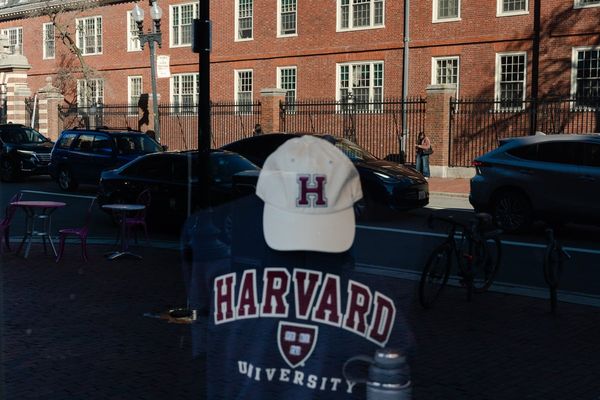TRUMP turbulence may hit Scotland’s tourist industry by making Americans more cautious about spending their money, an expert has predicted.
Last year, the Scottish tourist industry was given a post-Covid boost by record numbers of Americans travelling to Scotland, spending a total of £560 million in the first six months of the year alone – an increase of 77% from 2019.
It was a welcome fillip for the tourist industry, hit by a triple whammy of the cost of living crisis, the Covid lockdowns and the ongoing fallout from Brexit, and saw Scotland outperforming other parts of the UK in terms of American visitors.
While other international visitors also flocked to Scotland, American spend accounted for a whopping third of the total international spend from January to June 2024.
However, Dr Chris Greenwood of Glasgow Caledonian University has predicted that while the global financial chaos unleashed by US president Donald Trump may not immediately affect the total numbers of American tourists to Scotland, it could stop them spending as much.
“It’s worth pointing out that the US market is the largest inbound market by volume and value to Scotland and has been for many years,” said Dr Greenwood of the Moffat Centre for Travel and Tourism.
He said many US visitors would have already booked their holidays before President Trump sent stock markets tumbling by announcing draconian tariffs on US imports, but once here, they could be more cautious about how much they spend.
“They may take the trip but they may not spend as much so that might be a factor to take into account,” Dr Greenwood said. “I would say that we have quite a complex picture developing. There is a recognition that for other markets as well there is a cost of living element – not just for the US.
“The first half of 2024 was strong in terms of international inbound to Scotland, in particular US visitors. While the figures are unavailable, there is anecdotal feedback that there was a slowing of international across the UK in the second half of the year – however, this may not apply to Scotland.”
Dr Greenwood said that while US visitors might spend less than usual, he expected the numbers visiting would still remain high.
“This is a generalisation but they are quite sensitive about their welcome abroad so they don’t tend to go to places where they feel they might come up against some negativity or resistance,” he pointed out.
“If there is a decline in outbound travel from the US, Scotland may be a beneficiary of that smaller travelling market because there are the associated cultural ties, no language barrier and that perception of the warmth of welcome they might get.
“So rather than maybe going to mainland Europe where they may feel they won’t be as welcome, Scotland may be seen as a more welcoming destination.”
Dr Greenwood added that even if 2025 did not see the growth in tourism that it had last year, the numbers visiting could still be good.
“Scotland may see more Americans than other places in Europe proportionally,” he said.
“There is still that possibility that numbers could go down and I think that is linked to the uncertainty of what is going on.”
However, he said that even if US visitor numbers decreased in 2025, or were similar to last year or even 2023 levels – which would be a 46% drop in visitors – the total would still be in line with typical levels expected when compared to long-term volume averages.
Any drop in numbers from the US could also be compensated for by more Europeans and Canadians who may now rather visit Scotland than Trump’s US, according to Dr Greenwood.
“We may see that overall international tourism may grow for Scotland because we have that displacement of people from other markets who are not travelling to the US,” he said.
Another boost for the Scottish tourist industry could come from Asia now that restrictions on travel post-Covid have been lifted completely.
“People are hoping there is going to be a recovery in the Asian market and with the current geopolitical situation, we may find that those particular markets will be looking towards Europe and possibly Scotland as a destination,” Dr Greenwood said. “Whisky and golf work well with those markets.”
As far as numbers and visitor spend are concerned for 2026, Dr Greenwood said it would depend on the geopolitical situation over the rest of this year.
UN Tourism has warned that the current challenges facing international tourism are higher transportation and accommodation costs, other economic factors, geopolitical factors and extreme weather events.
In Scotland, Dr Greenwood said that the industry was looking at encouraging tourists to travel more widely rather than sticking to the hotspots like Skye.
“We want to be able to distribute visitor spend to other areas,” he said. “It’s about developing sustainable tourism both economically, socially and environmentally and trying to remove some of the seasonality and geographical nature that comes into it.
“That’s the drive that the industry is trying to develop and push for.”
Research has found that people are increasingly looking for unique experiences, new destinations and new connections.
“These are themes that the industry may be able to capitalise on by promoting,” said Dr Greenwood.







